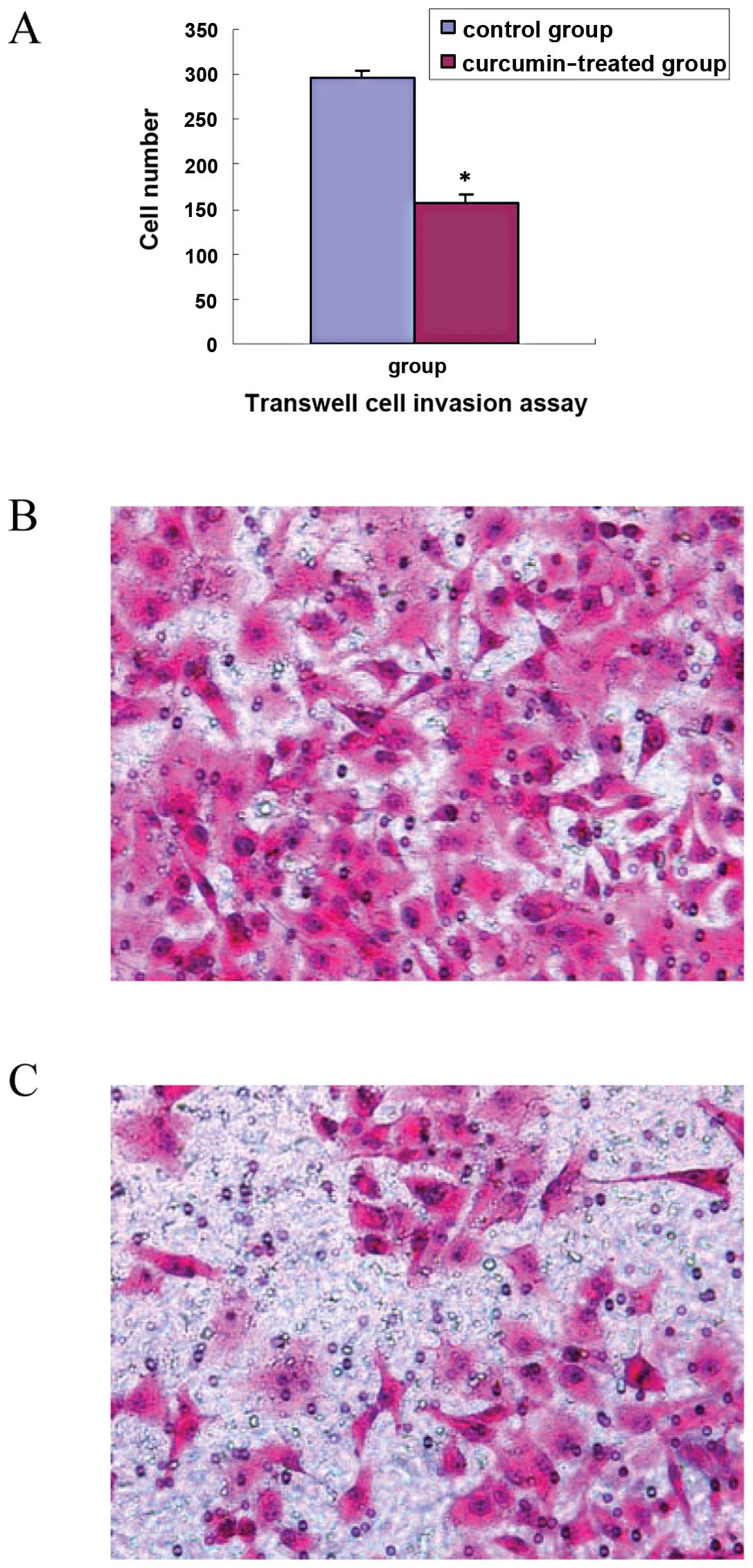Curcumin reverses the epithelial-mesenchymal transition of pancreatic cancer cells by inhibiting the Hedgehog signaling pathway
- Authors:
- Published online on: April 4, 2013 https://doi.org/10.3892/or.2013.2385
- Pages: 2401-2407
Metrics:
Total
Views: 0 (Spandidos Publications: | PMC Statistics:
)
Total PDF Downloads: 0 (Spandidos Publications: | PMC Statistics:
)
Abstract
Curcumin, a phenolic compound extracted from Zingiberaceae turmeric, has strong anti-inflammatory, antioxidant and antitumor properties. However, the anticarcinogenic mechanism of curcumin has yet to be fully elucidated. Epithelial-mesenchymal transition (EMT) induced by transforming growth factor-β1 (TGF-β1) is involved in the promotion of tumor invasion and metastasis, and is closely related to the drug resistance of tumor cells. The abnormal activation of Hedgehog signaling also plays an important role in tumorigenesis and metastasis. In order to investigate whether curcumin can reverse the TGF-β1-stimulated EMT of pancreatic cancer PANC-1 cells, and its possible mechanism, the pancreatic cancer cell line PANC-1 was stimulated with TGF-β1 (5 ng/ml) for 7 days to induce formation of EMT, and the TGF-β1-stimulated PANC-1 cells were treated with different concentrations of curcumin (10, 20 and 30 µmol/ml) for 48 h. The growth inhibition rate of the cells was measured by MTT assay, apoptosis was detected by flow cytometry, the expression levels of Shh, GLI1, E-cadherin and vimentin were detected by western blot analysis, and cell invasion and migration ability were examined by transwell cell invasion assay and wound healing assay. Following stimulation with TGF-β1, the expression levels of Shh, GLI1 and vimentin in the TGF-β1-stimulated group were significantly increased, compared with those in the control group (P<0.01, respectively). The expression levels of E-cadherin in the TGF-β1-stimulated group were significantly decreased, compared with those in the control group (P<0.01). The TGF-β1-stimulated PANC-1 cells were treated with curcumin and the results showed that curcumin significantly inhibited TGF-β1-stimulated PANC-1 cell proliferation and induced apoptosis, compared with other groups (P<0.01), and the expression levels of Shh, GLI1 and vimentin in the curcumin-treated group were significantly decreased compared with those in the control group (P<0.01, respectively). The expression level of E-cadherin in the curcumin-treated group was significantly increased compared with that in the control group (P<0.01). Cell invasion in the curcumin-treated group (30 µmol/ml) was significantly decreased compared with that in the control group (P<0.01). The scratch wounds in the curcumin-treated group healed slower compared with those in the control group (P<0.01). Curcumin significantly inhibited the invasion and migration of TGF-β1-stimulated PANC-1 cells. These results indicate that curcumin can inhibit the proliferation of TGF-β1-stimulated PANC-1 cells, it can induce apoptosis, and reverse the EMT. The possible underlying molecular mechanisms are through inhibition of the Shh-GLI1 signaling pathway.















